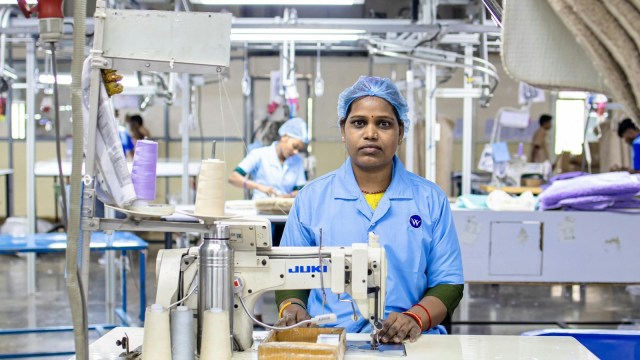As India pushes to make its youth more employable through targeted skilling programmes, new data from the Skill Impact Bond (SIB) results 2025 report highlights notable regional and gender-based trends. Launched in 2021 by the Ministry of Skill Development and Entrepreneurship (MSDE), the National Skill Development Corporation (NSDC), and an international coalition of funders, the SIB reveals that Jharkhand has the highest share of enrolled trainees. Moreover, women continue to dominate enrolment in the apparel sector; however, gender-based pay disparities persist – despite improvements in female retention and placement rates.

Backed by a $14.4 million outcome fund, the programme targets 50,000 youth, with at least 62 per cent being women, aiming to equip them with skills and link them to jobs in retail, logistics, healthcare, and other high-growth sectors. The focus has been on outcomes like job placement and retention, rather than just training completion, and on reaching vulnerable youth aged between 18 and 40, with a monthly household income under Rs 25,000.
Trends and regional patterns
The report highlights that across four evaluated cohorts, Jharkhand emerged as the top contributor, accounting for 27 per cent of the total enrolment, followed by Uttar Pradesh (9.1 per cent), Maharashtra (8.7 per cent), Odisha (8.3 per cent), and Telangana (6.7 per cent). Trainees — mostly unmarried and in their early 20s — tend to have an education level of Class 10 or 12.
 Regional enrolment trends and demographics as per MSDE data
Regional enrolment trends and demographics as per MSDE data
Women form more than 70 per cent of the total enrolments across cohorts. Their predominant area of training has been the apparel sector, though increasing numbers are also moving into IT-enabled services (ITeS), retail, and BFSI (banking, financial services, and insurance). Male trainees are mostly concentrated in construction and automotive sectors, but are also shifting to ITeS and retail over time. For male trainees, the construction sector is the dominant sector of enrolment although, like the apparel sector for females, its share decreases over time.
The IT-ITeS sector also demonstrates increasing enrolment of male trainees. The automotive, BFSI, capital goods, retail, and telecom sectors also contribute to this distribution of enrolled male trainees. Across cohorts, the ‘Others’ category includes sectors such as apparel, healthcare, logistics, and tourism & hospitality, each accounting for less than 5 per cent of the total enrolled male trainees.
Employment Outcomes: Encouraging but uneven
Female trainees have shown a steady improvement in employment outcomes across the four evaluated cohorts. Certification rates among women increased significantly, reaching 92 per cent by Cohort IV. Their job placement also saw an upward trend, rising to 81 per cent. Perhaps most notably, three-month job retention among female trainees improved from 48 per cent in the first cohort to 66 per cent in the fourth, equalling the retention rate recorded for male trainees.
Story continues below this ad
Interestingly, while male trainees maintained high certification (90–94 per cent) and stable placement rates (80–84 per cent), their employment levels declined sharply — from 68 per cent in Cohort 1 to 34 per cent in Cohort 4, due in part to many opting for further studies.
In contrast, female employment grew from 35 per cent to 48 per cent, and self-employment rose from 6 per cent to 14 per cent, particularly among those trained as sewing machine operators — indicating rising entrepreneurial ambition among women.
Pay disparities persist
Despite growing parity in placement and retention, male trainees continue to out-earn their female counterparts. Male median monthly salaries ranged from Rs 12,400 to Rs 15,700, while females earned between Rs 11,500 and Rs 13,000. The gap remains even as both groups show strong skill acquisition and workplace retention.
Reimagining the skilling ecosystem
The Skill Impact Bond marks a significant shift in India’s approach to skill development — from output-based to outcome-driven models. It encourages innovation, risk-taking capital, and gender-responsive delivery.
Story continues below this ad
The Skill Impact Bond is being implemented over eight cohorts, with each cohort running for six months from mobilisation of candidates, to enrolment, skills training, and certification of skills by a third-party agency. Trainees in the programme are selected based on a broad eligibility framework, with a focus on vulnerable and disadvantaged populations.



 Regional enrolment trends and demographics as per MSDE data
Regional enrolment trends and demographics as per MSDE data




























